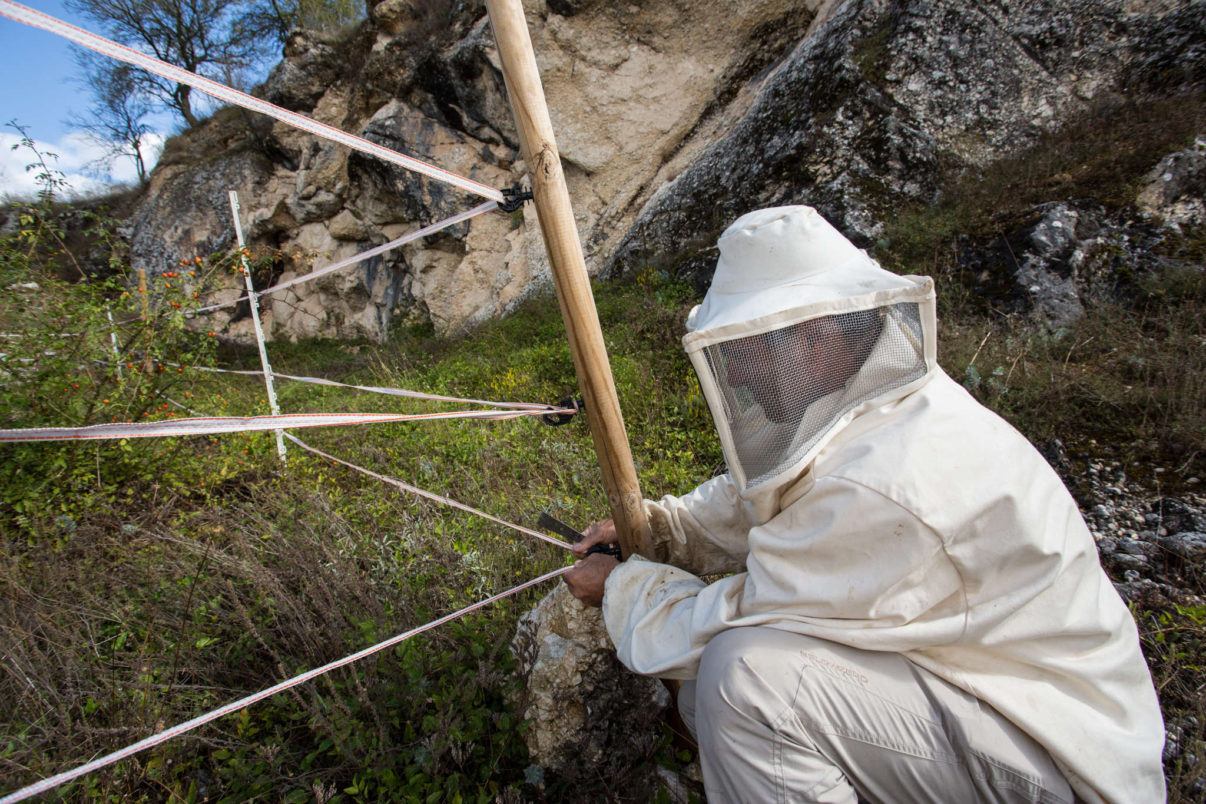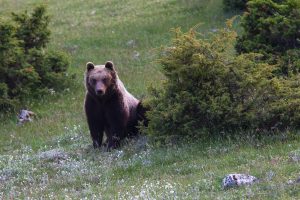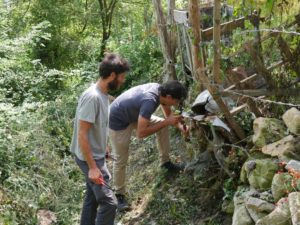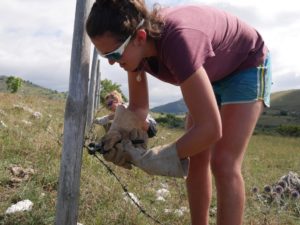By promoting harmonious relations between Marsican brown bears and humans, the bear ambassadors of the Central Apennines rewilding area in Italy are playing a vital role in the comeback of this iconic species.

 Corridor conservation
Corridor conservation
At Rewilding Europe, we want to see Europeans and European wild nature thriving alongside each other, not separated by fences or divided by human-wildlife conflict. In the Central Apennines rewilding area, where the most iconic wildlife species happens to be the endangered Marsican brown bear, that poses some unique challenges.
“In the past a lot of people were unhappy or uncomfortable with the presence of bears here,” says Pietrantonio Costrini, a biologist who works part-time for Italian NGO Salviamo l’Orso, Rewilding Europe’s local partner in the area. “These are big, powerful animals, so that’s understandable. But things are changing now. In local villages and towns there’s a growing sense of pride in the fact that these beautiful, iconic animals are living in the neighbourhood.”
Boots on the ground

With around 60 Marsican brown bears remaining in the Central Apennines, their situation is precarious. Current rewilding efforts focus on the development of four “coexistence corridors”, which enable the bears to move safely between the area’s network of national parks and nature reserves. This will hopefully diversify genetics and boost bear numbers. Critical to the promotion of harmonious bear-human relations in these corridors is the work of so-called “bear ambassadors”, a multinational team of grassroots volunteers set up in 2015.
Overseen by “head ambassador” Pietrantonio Costrini, who himself goes out into the field twice or three times a week, these volunteers carry out a range of corridor-based tasks. These include everything from pruning trees and helping to install electric fences through to recording signs of bear presence and chatting with villagers about their bear-related concerns.
Fences for freedom

The installation of electric fences might seem restrictive, but it has actually given Marsican bears more freedom to roam safely across corridor areas. Aided by bear ambassadors, the Rewilding Apennines team and Salviamo l’Orso handed out and helped to install 49 electric fences in the four corridors in 2018, as well as distributing metal doors and bear-proof bins. By protecting beehives, orchards and chicken coops from bear damage, these low-impact barriers really help to facilitate co-existence.
“The fences themselves, which we will go on distributing, are very efficient at deterring bears,” says Costrini. “Put one around a beehive and the animal soon understands this is a no-go area. Sometimes people need help installing or maintaining the fence, which is where the ambassadors come in.”
Vital volunteers
One of Pietrantonio Costrini’s jobs is to manage and train up the multinational team of volunteer ambassadors who rotate into and out of the rewilding area every year. Some of these stay for a few weeks, many for months.
Bear ambassador Marie-Charlott Petersdorf is a 25-year-old biology student from Bochum in Germany. She arrived in the Central Apennines in early August for a three-month stay.
“I am really enjoying my time here,” she says. “Every time you have a chat with a local villager or install an electric fence, it feels like you’re making a difference – both to the people and the bears. For me the most important part about being an ambassador is to give people the feeling they’re being listened to.”

Paula Mayer, an environmental science student based in Zurich, is another dedicated German bear ambasador.
“Every day is different,” she says. “Today, for example, we were installing an electric fence for a farmer whose chickens were recently attacked by a bear. Yesterday we cleared some barbed wire from the mountains, which can be dangerous for many animals. I have also set up camera traps next to some recently pruned apple trees to see how the bears benefit from them.”
Mayer went the extra mile to prove her dedication to Marsican brown bears recently by competing in (and winning) the 24-kilometre Roccaraso Trail race, which takes place in the Abruzzo region every year. Wearing a Salviamo l’Orso t-shirt, she dedicated her victory to Marsican bears and their conservation. What a benchmark for future ambassadors to surpass!
Practical proactivity
Discussions of human-wildlife conflict or coexistence are often a matter of semantics. But in terms of solutions, it is far better to focus on proactive mechanisms for coexistence, rather than mitigating conflict after it has happened.
“A lot of the time you just need to get out there, be a friendly face and interact with people,” says Pietrantonio Costrini. “I love being an ambassador. For me the Marsican bear is a special animal. By helping other people to value its existence, I can support its comeback. That’s a really satisfying feeling.”
Want to know / experience more?
- Volunteer to be a bear ambassador
- Learn more about Rewilding Europe’s work in the Central Apennines
- See Marsican brown bears in the wild with the European Safari Company
- Visit the Rewilding Apennines Facebook page
